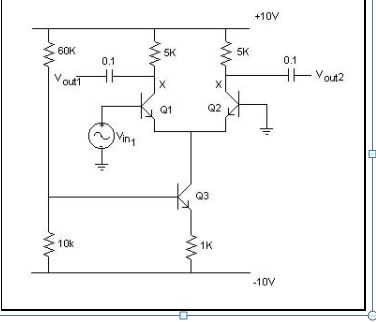I have a table of \$V_{out}\$ values for different source resistance values. Using this data, how can I calculate the effective input resistance of this circuit?
My attempted solution was using KCL around the base-emitter loop: $$\frac{V_s - I_bR_s-V_{be}}{I_b}=R_{in}$$ and $$ \frac{I_c}{\beta}=I_b$$
this doesn't appear to be correct, my values are varying with \$R_s\$ and I'm even getting negative values. What am I missing here?
